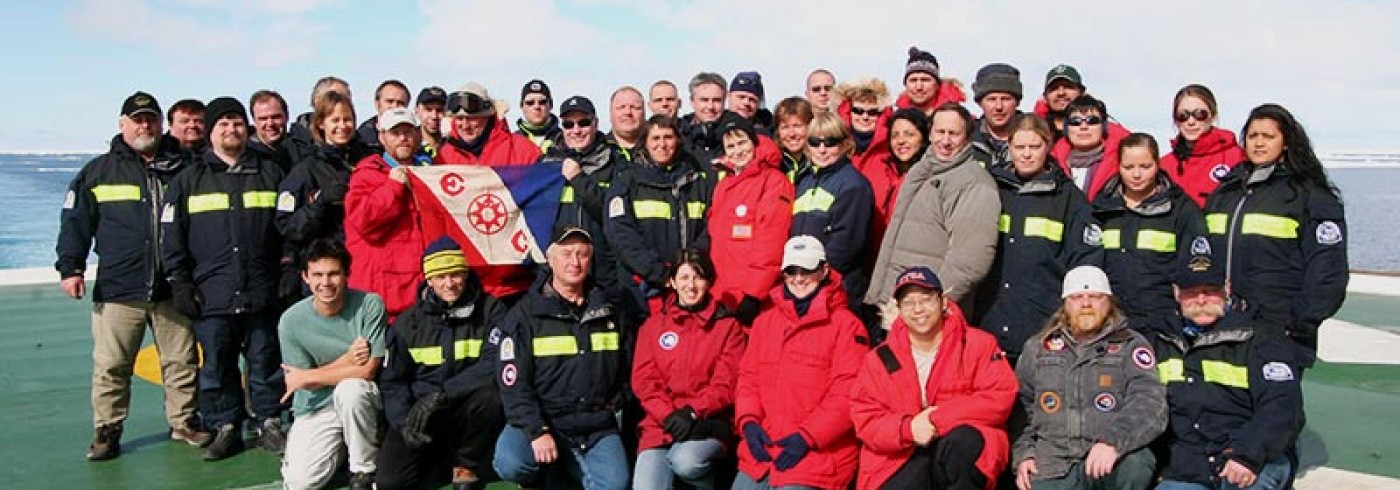Primary and secondary production measurements along the western Antarctic coastline on the Oden platform of opportunity cruise
12 December 2006 - 27 December 2006
Approximate transit route of the Oden from South America to McMurdo Station, Ross Island between 12 and 27 December 2006.
The aim of this project was to conduct underway measurements of primary and secondary production to establish a baseline for future cruises and as support for the marine mammal, sea bird and ice observations being conducted concurrently. The underway seawater stream was digitally sampled for temperature, salinity, total chlorophyll, pH, dissolved oxygen, CDOM fluorescence, nitrate, phosphate, iron, and zoo and phytoplankton. Discrete samples were also taken for total carbon, micro-plankton, and pigment structure by HPLC. A second system monitored water nutrients (nitrates, phosphates, silicates, iron) independently. MODIS remote sensing data was independently obtained for the cruise period to allow cross calibration with in situ pigment data and then cross-referenced with meteorological data recorded underway. The overall goal is to understand how the sea ice edge dynamics influence both primary and secondary production and especially larval krill dynamics.
Measurements of all nutrient elements remained constant throughout the transit voyage except for silicates and phosphates, which appeared to increase with distance from South America. In particular there was an interesting signal in temperature, conductivity, dissolved oxygen, pH, nitrate, and chlorophyll levels between 0600 hrs on 18 December (GMT) and late evening 19 December. At that time there were correlative spectral peaks in the frequency of images made by the water flow through the video plankton recorder. Another signal in temperature, conductivity, dissolved oxygen, pH, and chlorophyll levels developed when the Oden entered the main Amundsen and Ross pack ice field on 23 December and remained positive until observations ended on 27 December. There was an increase in gelatinous plankton on 26 and 27 December as the Oden exited the pack ice and entered the Ross Polynya.

